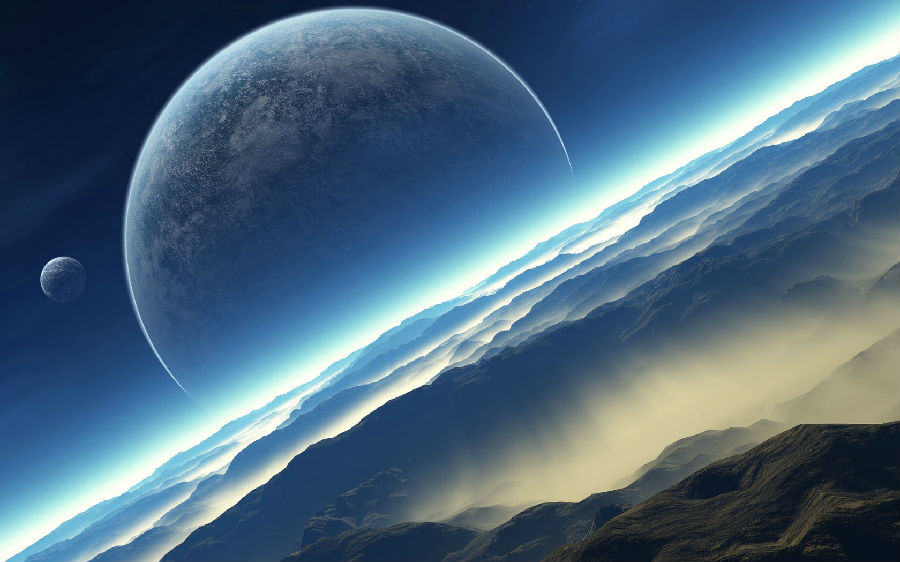About 4.6 billion years ago, a great swirl of gas and dust some 15 billion miles across accumulated in space where we are now and began to aggregate. Virtually all of it—99.9 percent of the mass of the solar system—went to make the Sun. Out of the floating material that was left over, two microscopic grains floated close enough together to be joined by electrostatic forces.
大约46亿年之前,一股直径约为240亿公里、由气体和尘埃组成的巨大涡流,积储在我们现在所在的空间,并开始聚积。实际上,太阳系里的全部物质--99.9%的物质--都被用来形成了太阳。在剩下的飘浮物质当中,两颗微粒飘到很近的地方,被静电吸到一起。

This was the moment of conception for our planet. All over the inchoate solar system, the same was happening. Colliding dust grains formed larger and larger clumps. Eventually the clumps grew large enough to be called planetesimals. As these endlessly bumped and collided, they fractured or split or recombined in endless random permutations, but in every encounter there was a winner, and some of the winners grew big enough to dominate the orbit around which they traveled.
这是我们的行星孕育的时刻。在整个初生的太阳系里,同样的情况正在发生。尘粒互相碰撞,构成越来越大的团块。最后,这些团块大到了一定程度,可以被称做微行星。随着这些微行星无休止地碰撞,它们或破裂,或分解,或在无休止而又随意的置换中重新合并,但每次碰撞都有一个赢家,有的赢家越来越大,最后主宰了它们运行的轨道。
It all happened remarkably quickly. To grow from a tiny cluster of grains to a baby planet some hundreds of miles across is thought to have taken only a few tens of thousands of years. In just 200 million years, possibly less, the Earth was essentially formed, though still molten and subject to constant bombardment from all the debris that remained floating about.
这一切都发生得相当快。据认为,从小小的一簇尘粒变成一颗直径为几百公里的幼星,只要花几万年的时间。在不过2亿年的时间里,很可能还不到,地球就基本形成了,虽然仍是灼热的,还经常受到仍在到处飘浮的碎片的撞击。












